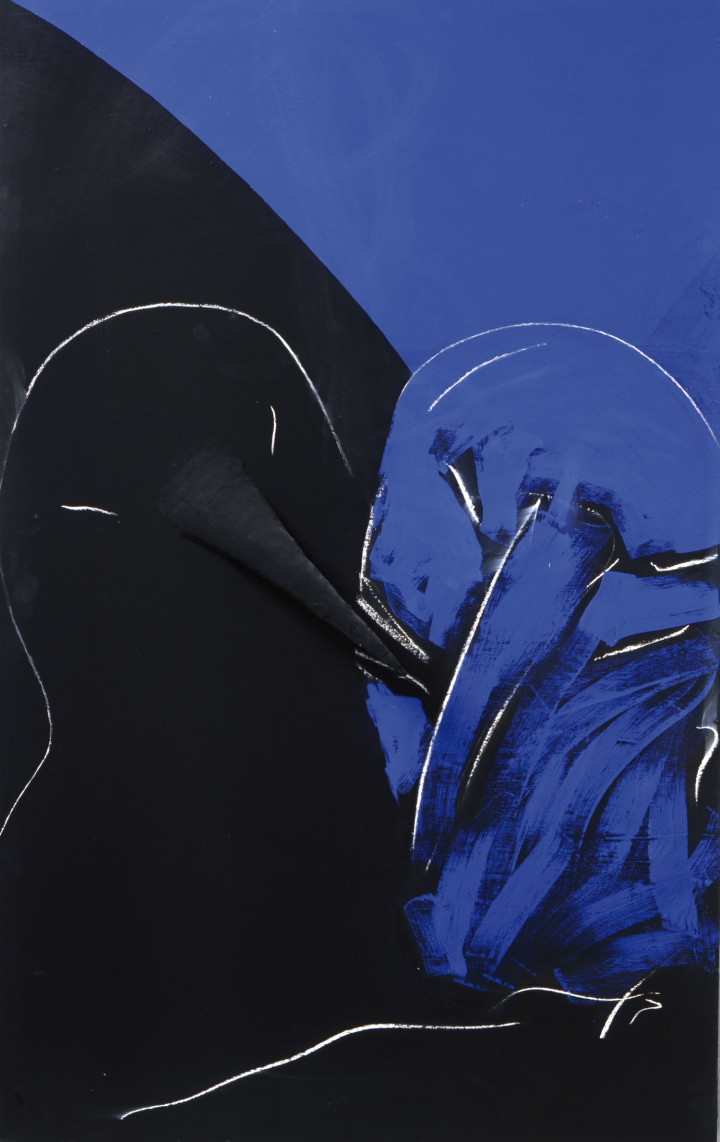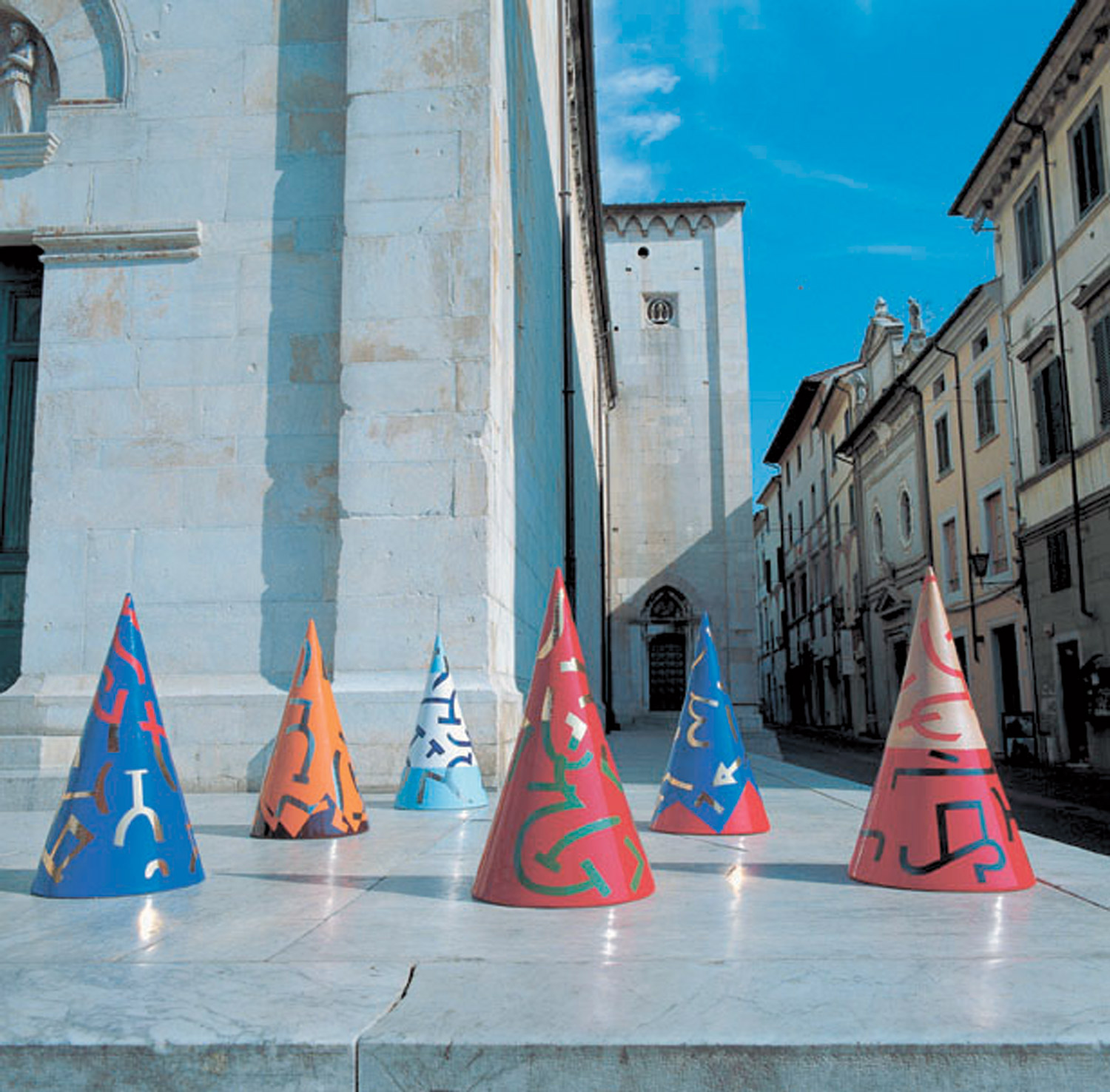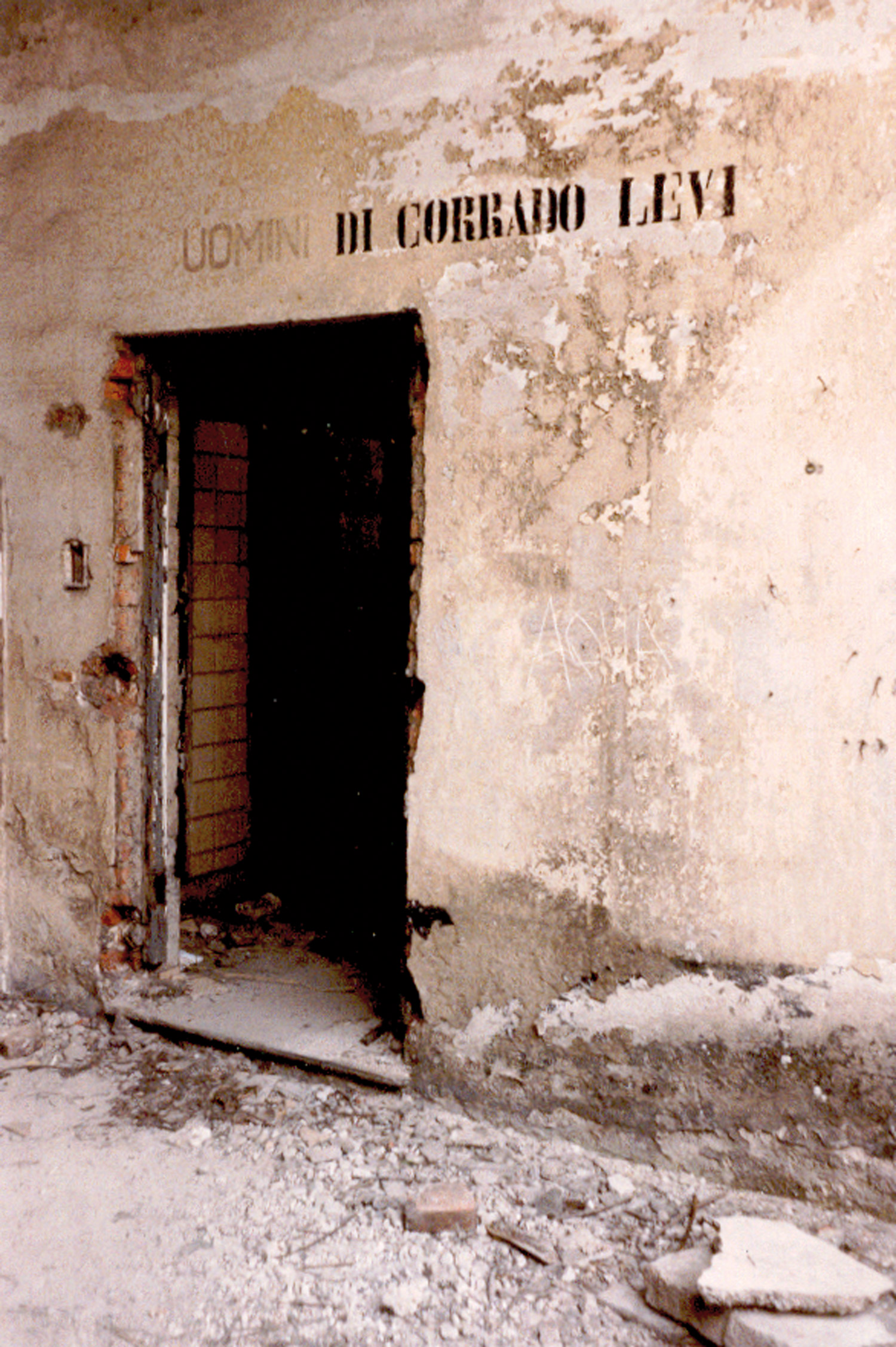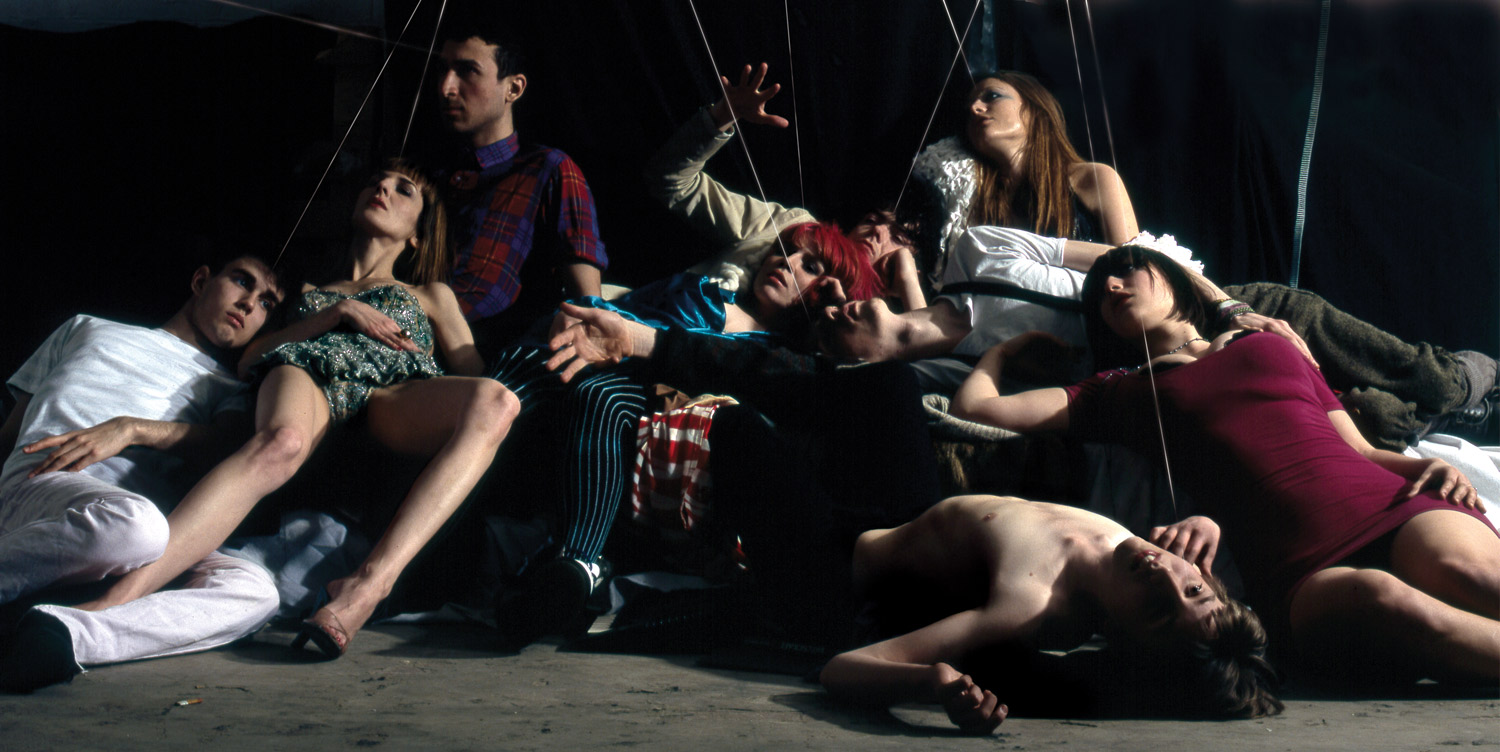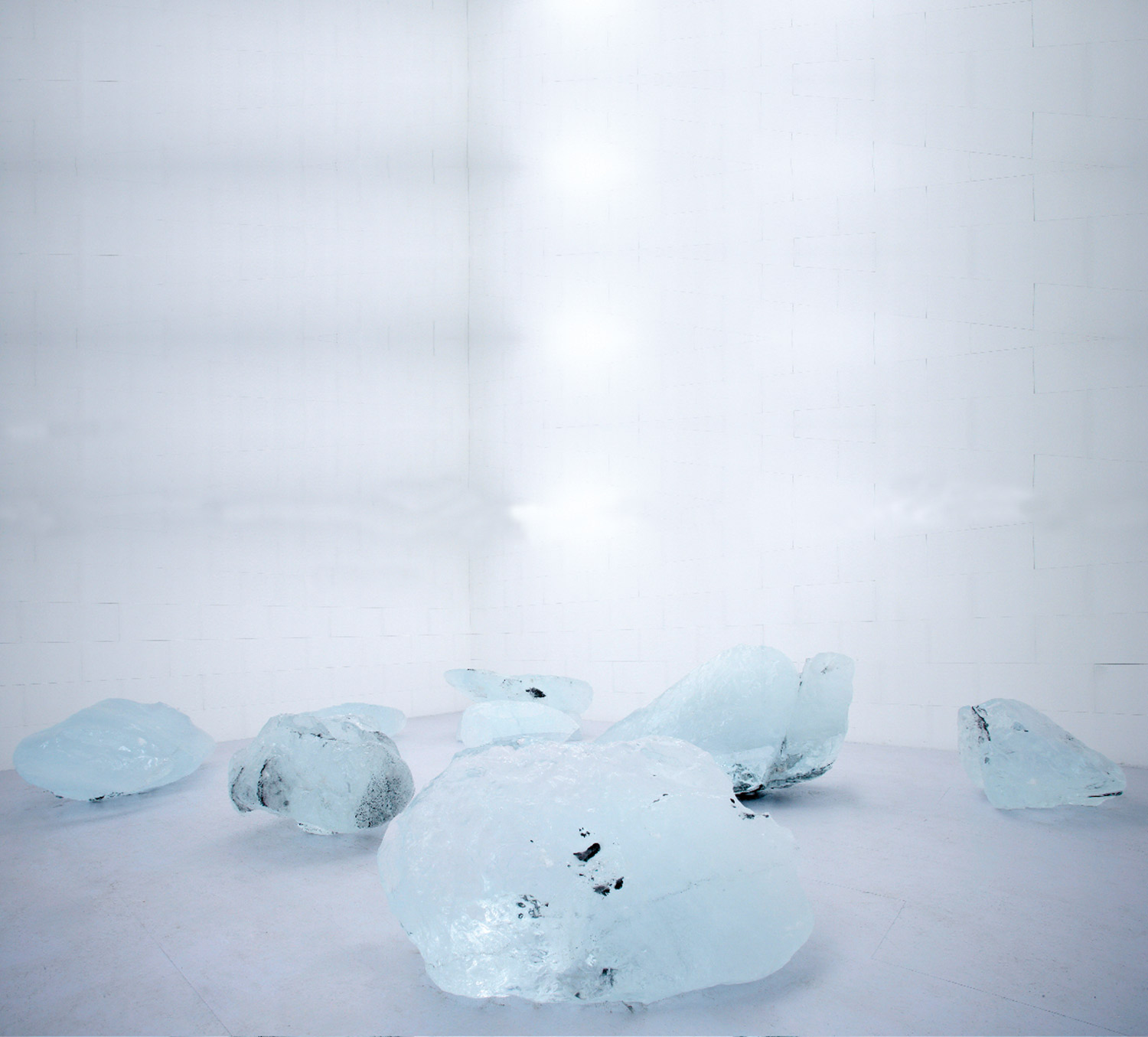
Dying is no more than not being seen. (Fernando Pessoa)
Gino De Dominicis was an extraordinary artist in terms of the sublime level of his works, but also in terms of his conscious ‘eccentricity’ with regard to the art world. Whatever the cost, he always thought, demonstrated and put into practice the highest conception of the artist’s role. He had total faith in painting and believed he had found a language that was the highest expression of a medium that was fundamentally unified. We know how De Dominicis controlled every aspect and every characteristic of his work. We know what extreme attention he paid to even the slightest detail. Now we face the problem of reconciling two pressing needs: respect for his thoughts and desires, and the wish to preserve his extraordinary works. Although we are surrounded by an excess of images, the superb works of Gino De Dominicis must be tracked down to be seen. It is always worthwhile, for they never fail to live up to expectations. I have never witnessed a challenge to the present-day art system as radical as his, but it is one without provocation, without ideology — one that comes from the heart of the works. Nor have I ever met anyone who had such total, absolute and unfailing faith in the centrality of the work of art.
Oxymoron and Homoeopathy
“Drawing, painting and sculpture are not traditional but original forms of expression, and thus also belong to the future.” These were the words of Gino De Dominicis. In Sumerian culture, the hero Gilgamesh was king, painter, sculptor and architect. So he was not the warrior king of later generations: among the Sumerians, the king was the artist. Right from the start, Gino De Dominicis drew, painted and made three-dimensional works. In the year of 1964 he had already shown about a hundred paintings and drawings. Then, when galleries started to reject painting, he gradually managed to reintroduce both drawing and painting into the discourse. Beyond the recurrent problem of painting, the real adventure began with a surprisingly lucid and self-assured exhibition in 1969, at Fabio Sargentini’s L’Attico. In this show, a poised golden rod, entitled Equilibrium, was suspended in space: it appeared as a sort generative line for the entire work. Next to it were the Cubo Invisibile (Invisible Cube) and the Cilindro Invisibile (Invisible Cylinder): traced out on the ground, their bases formed a circle and a square, and possibly these two solids were chosen precisely for their different bases and for the dialectic between circle and square that was to return in Tentativo di far formare dei quadrati invece che dei cerchi attorno a un sasso che cade nell’acqua (Attempt to form squares instead of circles around a stone falling into water). A hook appeared to hold a pail filled with water suspended in the air, as though water were solid and could be pulled up. Also a nail — a minimal analogy of the rod — was suspended from a wall. And then the stone — Aspettativa di un casuale movimento molecolare generale in una sola direzione tale da generare un movimento spontaneo del materiale (Waiting for a general random molecular movement in a single direction to generate spontaneous movement of the material) — and the ball — Palla di gomma (caduta da 2 metri) nell’attimo immediatamente precedente il rimbalzo (Rubber ball [fallen from a height of two meters] at the instant immediately prior to its rebound). Even though they consisted of just two simple elements, the complexity of these works is to be found in their double — and, in a certain sense, contradictory — status: on one hand in the way the invisible movement — which is virtual in the case of the ball and hoped-for in the case of the stone — is made transparent, and on the other, the power of the language of art to capture the moment of immobility. All is sealed by a funerary poster announcing his own death. The date, November 1969, is that of the exhibition.
His work was erroneously considered by some to be ‘conceptual.’

But Mozzarella in Carrozza (1970) formalized the conflict: here words took material, visual form. It was also a demonstration of the fact that mozzarella remains what it is even when it resides in a luxury coach, mocking Marcel Duchamp’s imitators, who still believe that the gallery or the museum has the power to transform any object displayed there into a work of art. Duchamp’s analysis has been transformed into superstition, according to which the place acts as a sort of magic wand. A degree of artistry that, it is claimed, passes metonymically from the container to the content. De Dominicis exposed this mechanism by demonstrating its ineffectiveness: in an exhibition at Gian Enzo Sperone’s gallery in Rome in 1982, the toilet remained what it was, by no means miraculously transformed by being close to a painting.
These are ‘homeopathic’ operations that criticize fashionable practices by duplicating them. “In my art, I have made drawings, paintings, ‘sculptures’ (three-dimensional works), invisible works, ubiquitous works, architecture and, on some occasions, ‘physical oxymorons’ and ‘homoeopathic’ works.” Noi siamo le puntine (We are the drawing pins) (1975) was another homoeopathic-type operation: writing this sentence on the ground with the drawing pins themselves, this time the artist ironically duplicated the minimalist tautology, also reproducing the ground-level spatial arrangement of some works of Minimalism.
On December 12, 1970, critic Maurizio Calvesi curated the “Fine dell’Alchimia” exhibition at L’Attico: Jannis Kounellis presented a blindfolded woman with flies that landed on her belly; Vettor Pisani displayed a slowly moving tortoise with a golden weight on its back in the midst of tortoise shells; Gino De Dominicis came with his skeleton on roller skates, a pole balanced on a finger and a dog on a lead: Il tempo, lo sbaglio, lo spazio (Time, Mistake, Space). In De Dominicis’s view, the space of art is that of verticality, and the error is that of attempting to move horizontally and, to an even greater degree, the desire to apply acceleration by using roller skates.
D’IO is a play on words — ‘God’ (‘Dio’) and ‘Of myself ’ (‘d’io’) — that forms the title of an intangible exhibition from April 24, 1971. Consisting of sound alone, it appears to have anticipated many recent trends. It is a long, powerful and prolonged laugh that echoes through the empty gallery: this too is an invisible work.
The View from Within
In 1972 came the room that caused such a scandal at the Venice Biennale with the work entitled Seconda soluzione d’immortalità (L’Universo è immobile) (Second Resolution of Immortality [The Universe is Still]). At opposite ends of the room, on two small chairs suspended high on the walls, were the figures of Il Giovane (The Young Man) — performed by Simone Carella, De Dominicis’s assistant — and Il Vecchio (The Old Man). According to Carella, the Palla di gomma (caduta da due metri) nell’attimo immediatamente precedente il rimbalzo (Rubber ball [fallen from a height of two meters] at the instant immediately prior to its rebound), is an artificial element, full of air, and it alludes to an attempt to fly, while the stone, Aspettativa di un casuale movimento molecolare generale in una sola direzione tale da generare un movimento spontaneo del materiale (Waiting for a general random molecular movement in a single direction to generate spontaneous movement of the material) is a natural element linked to the earth, waiting for a movement adherent to it. In addition to these objects, there was also the Cubo invisibile (Invisible Cube) in front of Paolo Rosa. It is clear that the room is a magical territory dominated by a circular form of vision, and indeed in the foto ricordo (snapshot) we see a spectator putting on a pair of glasses. The artist himself spoke about the “viewpoint within the work.” The room itself is built as an interior — as a non-communicable situation. A theater of the mind, placed paradoxically on the stage not by the normal means of the theater — movement, words, texts — but by those of the visual arts.
Motionless Odyssey
Gino De Dominicis returned to the subject of immortality and to the overcoming of entropy on December 18, 1972, at the Incontri Internazionali d’Arte at Rome’s Palazzo Taverna: on the occasion of the evening, an invitation card to a cocktail party to celebrate the overcoming of the second law of thermodynamics was sent. Refreshments were offered in crystal glasses and on porcelain plates. The table was adorned with silver candlesticks, and crystal chandeliers hung from the ceiling. Newspapers with sensational titles were posted on the walls, announcing: “Man has achieved the immortality of the body.”

In one of the versions of his Lettera sull’Immortalità (Letter on Immortality), he wrote: “Since man cannot intervene directly on himself to stop the inexorable advance of his own ‘internal time’ and prolong his own life span, he has invented the means to make it that much faster: by intervening in space, he has indirectly managed to influence time. This operation might be justified only if space were finite and our imagination limited. Unfortunately, however, it is simply a palliative and a terrible mistake.” These words not only provide the best explanation for Il tempo, lo sbaglio, lo spazio (Time, Mistake, Space), but also provide a good introduction to another work he made for L’Attico: his Poltrona per un viaggio nello spazio (Armchair for Space Travel). The artist modified an armchair like the ones used by barbers, adding a sort of ski-boot attachment to its feet and putting a sign on it with words that referred to the dual movement — rotation and revolution — of the Earth. In 1975 the public were forbidden to enter the Lucrezia De Domizio gallery in Pescara. This was the “Exhibition for Animals Only.” Spectators peeped in from the entrance and, on the threshold, an ox looked out, as did a donkey, a goose, a hen… Animals had been selected by the artist as beings that have no consciousness of death. It is clear that, in animals, just as in the young Paolo Rosa some time previously, De Dominicis was looking for alternatives to the destiny of mortals, and to the paradigms of the immortality of the body.
Almost as though wishing to arrest time, De Dominicis performed a disappearance and reappearance at the Pio Monti gallery in Rome: “I remember two exhibitions,” said the gallerist later in an interview, “both exactly the same, repeated in my gallery exactly one year apart — on 14 January, 1977, and 14 January, 1978, with a huge stone, a balancing rod, two pots that represented ubiquity, and an invisible pyramid. Those who had been to the first exhibition in the same place found the same objects in the same positions: they were bewildered, as though time had indeed been brought to a standstill!”
Against Photography
In 1973 Gino De Dominicis was invited to present a room of his own at the “Contemporanea” exhibition curated by Achille Bonito Oliva at Villa Borghese in Rome. In the room there was also a photographic portrait taken by Elisabetta Catalano, under which the artist wrote a piece on the subject of identity, starting off with the words: “Portrait from life of an artist…” This means it was a portrait (a genre that the artist took up in painting during his final years) which was not only authorized, but even used within a work of his own and on a number of occasions. Confirmation of this can be seen in a picture of De Dominicis — a mental operation of the artist who, in 1975, had himself photographed full-length by Buby Durini while concealing his face behind the portrait by Elisabetta Catalano, which in this case acts as a mask: De Dominicis has himself replaced by his own portrait. A way of evading photography through photography itself. But it should also be pointed out that the artist used photography in some works of his, such as foto ricordo (snapshot), the Tentativo di far formare dei quadrati invece che dei cerchi attorno a un sasso che cade nell’acqua (Attempt to form squares instead of circles around a stone falling into water), and the photo of the Madonna che ride (Laughing Madonna) as a non-existent statue (after the work was destroyed) and others. Each work seems to choose its own technique, and photography too is allowed in among them.
Time and The Mirror
One example of the complex system of relationships in the work of De Dominicis between the illusory space of painting and the real space of environment — and, at the same time, of the dialectic between space and time — can be seen in the work shown in 1988 at Galleria Lia Rumma in Naples. In Arte visiva e immortalità Gabriele Guercio described it like this: “Taking up his Specchio che tutto riflette tranne gli esseri viventi (Mirror That Reflects Everything Except for Living Beings) (1969, later destroyed), the artist performed a total elimination of the public and of everything that moved in the exhibition space. In the dimly lit room, a projector illuminated a panel in black tempera, with Urvasi and Gilgamesh seen in profile, in silver-gray pencil, and a shining polyhedron at the level of their eyes. On the wall opposite the painting an oval frame looked just like a mirror, but when one went up to it, one could see that the ‘mirror’ reflected the room and the painting, but not the visitors. Discovering the trick — which was that of making two symmetrical rooms with two identical paintings — is less important than grasping the outcome. The ‘mirror,’ which reflects everything except for anything that moves or is alive, removes and projects both works of art into a dimension that is totally alien to that of the spectators. By contrasting the permanence of the two paintings with the transience of the spectators, it strengthens the idea of timeless art and the destiny of the public.” De Dominicis’s solution to the problem of immortality was beginning to take shape: it is the destiny of painting, not of man, and — we might add — of the work, not of the artist.

Pictor Maximus
The enchantment of a face that emerges from subtle and skillful signs; the fascination of a glance that opens up in an inner and an outer world: this could well be the introduction to the paintings of Gino De Dominicis. An enigmatic smile, one eye closed and the other open — these are the characteristics attributed to a male face on canvas and a female face on wood, which enters the work with its veining. Drawing was a mainstay in the work of this artist, though he did not exclude other forms of expression. Drawing and painting were accompanied by three-dimensional works. These elements sometimes appear in his painting — the rod, for example, returns a number of times, also in the large panel where the two faces brush against each other. De Dominicis’s style surprisingly reveals a gift for drawing. In his works, and especially in his drawings, they often return to the human face and, especially, to the female figure. In painting, he achieved almost unimaginable results. He achieved the height of complexity and the greatest harmony with the almost paradoxical use of simple, traditional and essential means: a panel, tempera and pencil.
In the most important part of De Dominicis’s works — the face — there is always a gap in some detail. The miracle of painting is that it renders a physiognomy in just a few lines, in a few rapid marks that are sometimes barely hinted at, sometimes more close-knit and light. In some cases the gap consists of the nose, the element that links the upper, more spiritual part of the face to the lower part, which is excessively elongated. This deformation, which came from drawing, can also be seen in the large skeleton that lies motionless as the hyperbole of the human figure reduced to the bone, and differentiated only by an appendage — the nose — which is the missing part of a skeleton.
In the artist’s view, the languages of the figurative arts are characterized by their relationship with matter and immobility. Even when he portrayed living people, De Dominicis showed them motionless. The absence of a process of time is another characteristic. The presence of the work of art is absolute.
Kali-yuga in Full Swing
In Indian philosophy, Kali-yuga is a calamitous era, verging on collapse caused by a total loss of values. The fact that he gave the title “in pieno Kali-yuga” to his last exhibition, which opened at the Emilio Mazzoli Gallery in Modena on 30 May, 1998, six months before he died, is indicative of De Dominicis’s ideas about what was taking place in reality and in art all around him. His painting acquired depth and turned outwards, combining different spatial qualities. In a certain sense this type of work was anticipated by densely material painting, which was almost in relief, like the small but dense profile of 1980. Gabriele Guercio said of the exhibition: “Many of the works were paintings of faces or figures with cone-shaped noses that lengthened out like beaks or trunks, sometimes three-dimensional (modeled in clay and covered with paint). For example, in the violet and yellow figure on a black background, called Con titolo (Titled) of 1985, the three-dimensional cone-shaped nose is almost as long as half the entire body.
On the subject of Sumerian art, André Malraux talked of a “beak-shaped nose inherited from the prehistoric bird-man.” The reference to Sumerian civilization is certainly plausible, but this element of the nose is more than anything a powerful intellectual invention. The container becomes a sort of miniature architecture inhabited by a figure that becomes both painting and sculpture. The proportions between the whole and the part become far more important.
The question that Nicolas Bourriaud poses himself in an essay republished in the catalogue for which this text originally appeared — how to restore power to images without precipitating into the ideology of the aura, which has fallen into disrepute in this “age of technical reproducibility” — finds an answer in Gino De Dominicis. His work aims to reconstitute that incomparable, inveterate, irrevocable aura, but this time as art’s solution to the problem, posed by modern science, of entropy, the dispersion of the energy which art, on the contrary, concentrates and cultivates in the gift of the work.
Gino De Dominicis talks with a large painting with a female subject in front of him. In the end he turns to this figure and asks: “Is it true?” And the living painting replies: “Yes.”

